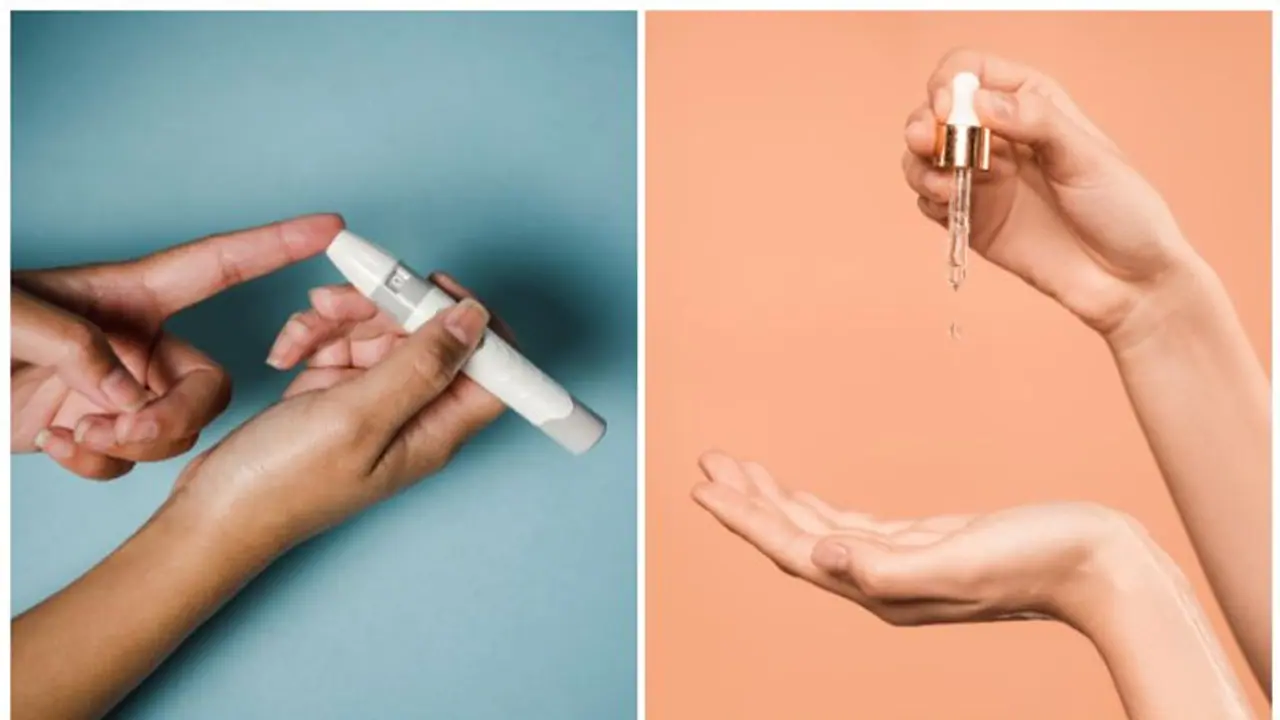Taking care of the skin during the monsoon season is crucial for diabetic patients to prevent skin-related problems that can arise due to increased humidity and moisture. - By Mahasweta Sarkar
During the monsoon season, diabetic patients need to exercise extra caution when it comes to skincare. The increased humidity and moisture can lead to various skin problems, making it essential for them to follow specific guidelines to protect their skin's health. By following certain tips, diabetics can protect their skin's health and overall well-being, ensuring a comfortable and enjoyable monsoon experience.

Here are some important tips for diabetic patients to take care of their skin during the monsoons:
ALSO READ: Brightening to Collagen: 5 incredible benefits of Parsley on your Skin
1. Stay Hydrated
Proper hydration is essential for maintaining healthy skin, and this holds true for diabetic individuals as well. Drinking an adequate amount of water throughout the day helps keep the skin hydrated, improve its elasticity, and support overall health. Hydration is even more critical during the monsoons as the humid weather can lead to excessive sweating and fluid loss. Diabetics should aim to consume at least 8-10 glasses of water daily, and if their doctor recommends higher fluid intake due to certain medical conditions, they should adhere to those guidelines.
2. Protect Against Fungal Infections
Fungal infections thrive in humid environments, and diabetic patients are more susceptible to such infections due to their compromised immune system. To prevent fungal infections, it's essential to keep the skin dry, especially in areas prone to sweating, such as the groin, underarms, and under the breasts. After showering or if the skin gets wet due to rain, it's crucial to thoroughly dry these areas with a clean towel. Using antifungal powders or creams recommended by their healthcare provider can further help in preventing and treating fungal infections.
3. Follow a Healthy Diet
A well-balanced diet plays a vital role in maintaining healthy skin, and this is particularly relevant for individuals with diabetes. Following a diabetic-friendly diet is crucial, which includes a variety of fruits, vegetables, whole grains, and lean proteins. These foods are rich in essential nutrients, antioxidants, and fiber, which contribute to skin health and overall well-being. Additionally, a healthy diet helps in managing blood sugar levels, which is essential for individuals with diabetes.
4. Pay Attention to Your Feet
Diabetic patients need to pay special attention to their feet as they are particularly vulnerable to foot problems. Due to nerve damage and reduced blood flow, injuries or infections on the feet can go unnoticed and lead to serious complications. Therefore, it's essential to inspect the feet daily for any cuts, sores, blisters, or signs of infection. Diabetics should wash their feet with lukewarm water and mild soap daily, and then pat them dry with a soft towel. Applying a foot cream, especially on dry areas, can help prevent dryness and cracking. Using a hand-held mirror to inspect the feet thoroughly, including the soles and between the toes, can be helpful in identifying any issues that may require medical attention.
5. Wear Breathable Clothing
Choosing the right clothing during the monsoons can help prevent skin-related problems. Diabetic patients should opt for light, breathable fabrics like cotton to reduce sweating and moisture accumulation on the skin. Wearing loose-fitting clothes can also promote air circulation and help keep the skin dry and comfortable.
6. Avoid Going Out Barefoot
Walking barefoot, especially during the monsoons when the ground is wet and slippery, can be harmful to the feet. Diabetic patients should always wear appropriate footwear to protect their feet from injuries and infections. Closed-toe shoes with non-slip soles are ideal for ensuring proper foot protection during the monsoon season.
